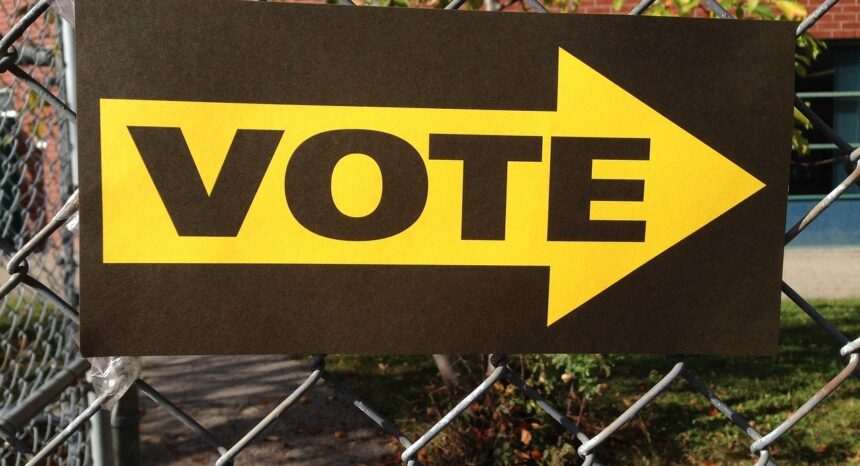Do U.S. citizens have an unqualified right to vote? Americans say that they do and, at election time, they are urged to exercise that right. Yet, the U.S. Supreme Court — or more precisely, a faction within the Court — holds a different view, as does a corresponding faction of elected officials.
In 1937, the Supreme Court argued that Americans’ rights are hierarchical, that some are more fundamental than others. The ruling came in Palko v. Connecticut in which the Court declined to extend double-jeopardy protection to cases arising under state law. Barely more than a decade earlier, the court had upheld the right of free speech as being protected against state action. In justifying why one right and not another was protected, the court decided that the Fourteenth Amendment protects rights “fundamental” to liberty but does not necessarily protect other rights. Free expression was said to be “fundamental” in that it was “the indispensable condition of nearly every other right.”
Is the right to vote “fundamental”? By the Supreme Court’s own definition, it would appear to be. If citizens can be denied their right to vote, democracy would be a hollow promise. The wording of the Fourteenth Amendment’s equal protection clause would also appear to suggest that states do not have the authority to erect barriers that would make it more difficult for a particular group to exercise its right to vote. The amendment reads in part, “No state shall deny … any person within its jurisdiction the equal protection of the laws.”
Yet, in a series of decisions stretching back to 2008, the Supreme Court has upheld state laws that burden the voting rights of particular groups. It let stand, for example, a 2017 North Dakota law that requires residents to have written proof of a street address before they can vote. The law targeted Native Americans who live on rural tribal lands, which don’t have names and numbers on all their roads.
The most far-reaching of the Supreme Court’s decisions is Crawford v. Marion County Election Board, a 2008 ruling that upheld an Indiana law that requires citizens to have a government-issued photo ID card, such as a driver’s license or passport, in order to register to vote. That decision opened the way for more than two dozen other states to pass similar laws. And who, exactly, are the Americans who don’t have a driver’s license or passport? Well, compared with non-Hispanic white people, Black Americans are about three times more likely not to have one, whereas Hispanics are nearly twice as likely.
America has a lengthy history of abridging voting rights, most clearly in the South during the Jim Crow era when the grandfather clause, whites-only primaries, poll taxes and literacy tests were devised as ways to disenfranchise African Americans. That type of disenfranchisement was thought to have ended with passage of the 1965 Voting Rights Act.
The Supreme Court effectively gutted that protection in 2013. In Shelby County v. Holder, it invalidated the provision of the Voting Rights Act that required states and counties with a history of voter suppression to get permission from a federal judge before changing election procedures in a way that could disadvantage a minority group. Freed of the preclearance requirement, legislatures throughout the South have placed new restrictions on voter eligibility.
There’s a pattern to all of this. None of the aforementioned Supreme Court rulings was decided by a unanimous vote. Most were 5-4 decisions with all of the justices in the majority being Republican appointees. As for the states that have imposed additional burdens on the vote, virtually all were under Republican control at the time the law was passed.
The legal justification employed by the Supreme Court’s Republican-appointed justices is the sanctity of the ballot. Precedent exists. In Rosario v. Rockefeller in 1973, the Court held that “preservation of the integrity of the electoral process is a legitimate and valid state goal.” In light of the fact that illegal voting is exceedingly rare, it is a thin reed on which to hang far-reaching decisions. But the precedent is there, and the Court’s Republican-appointed majority has made use of it.
In the three months between now and the November vote, as recent events including President Donald Trump’s attacks on mail-in voting have revealed, the election will be fought on several fronts, one of which will be ballot access. Journalists will need to help the public understand what’s at stake and why voting rights are less than absolute. It’s even possible that they will have the unenviable task of explaining why a flawed process was upheld by the Supreme Court’s Republican-appointed majority. It won’t be the first time that journalists have been asked to do so. In 2000, they had to explain to their audiences why the court’s Republican appointees handed the presidency to George W. Bush by blocking a recount of the presidential vote in Florida.
Thomas E. Patterson is the Bradlee Professor of Government & the Press at Harvard’s Kennedy School and author of the recently published Is the Republican Party Destroying Itself?
Further reading:
Joshua A. Douglas, “Is the Right to Vote Really Fundamental?” Cornell Journal of Law and Public Policy 18 (2008): 143-201.
Keesha Gaskins and Sundeep Iyer, “The Challenge of Obtaining Voter Identification,” Brennan Center for Justice, July 18, 2012.
Crawford v. Marion County Election Board, Citation: 553 US 181, 2008.
Shelby County v. Holder, Citation: 570 US 529, 2013.


Expert Commentary